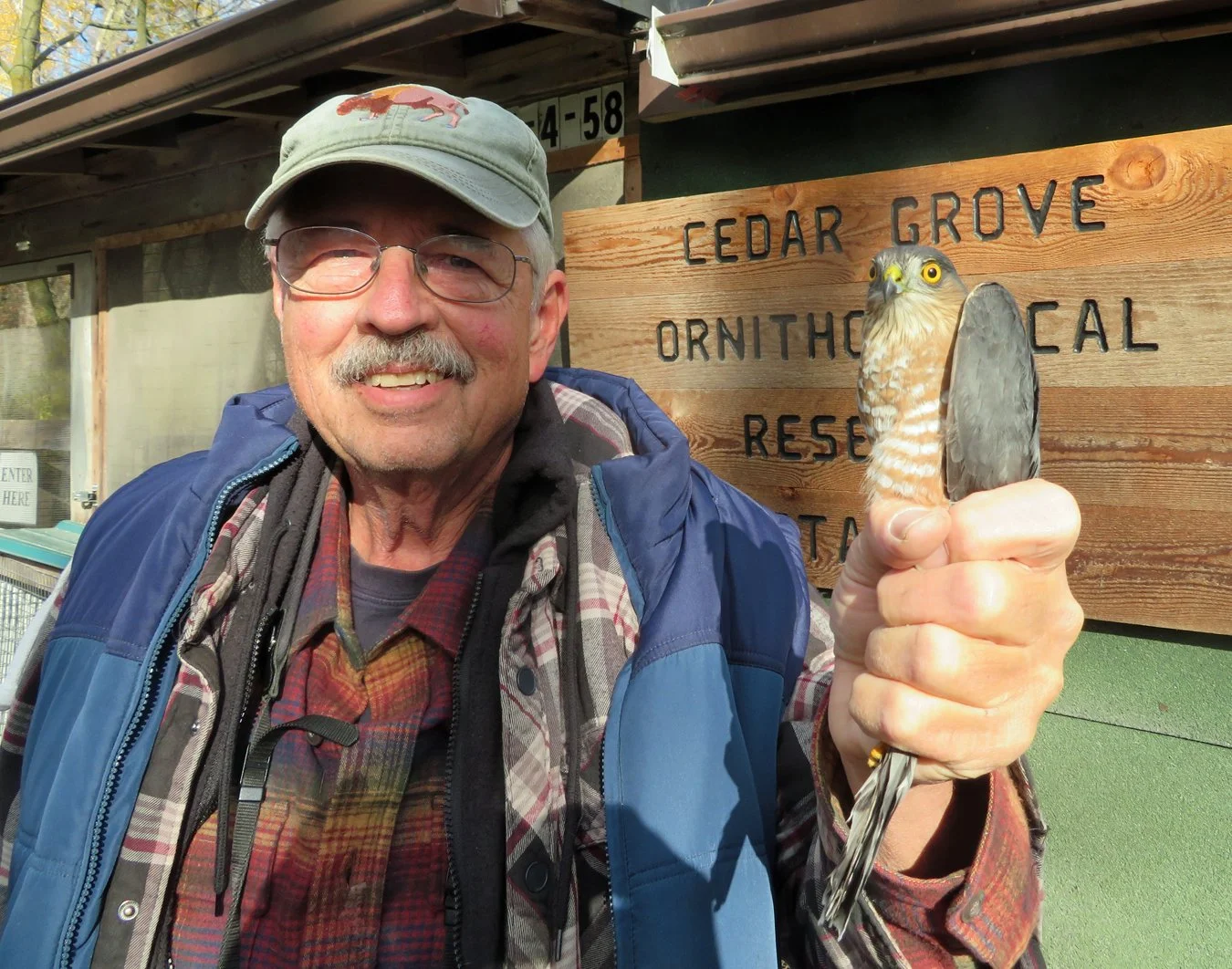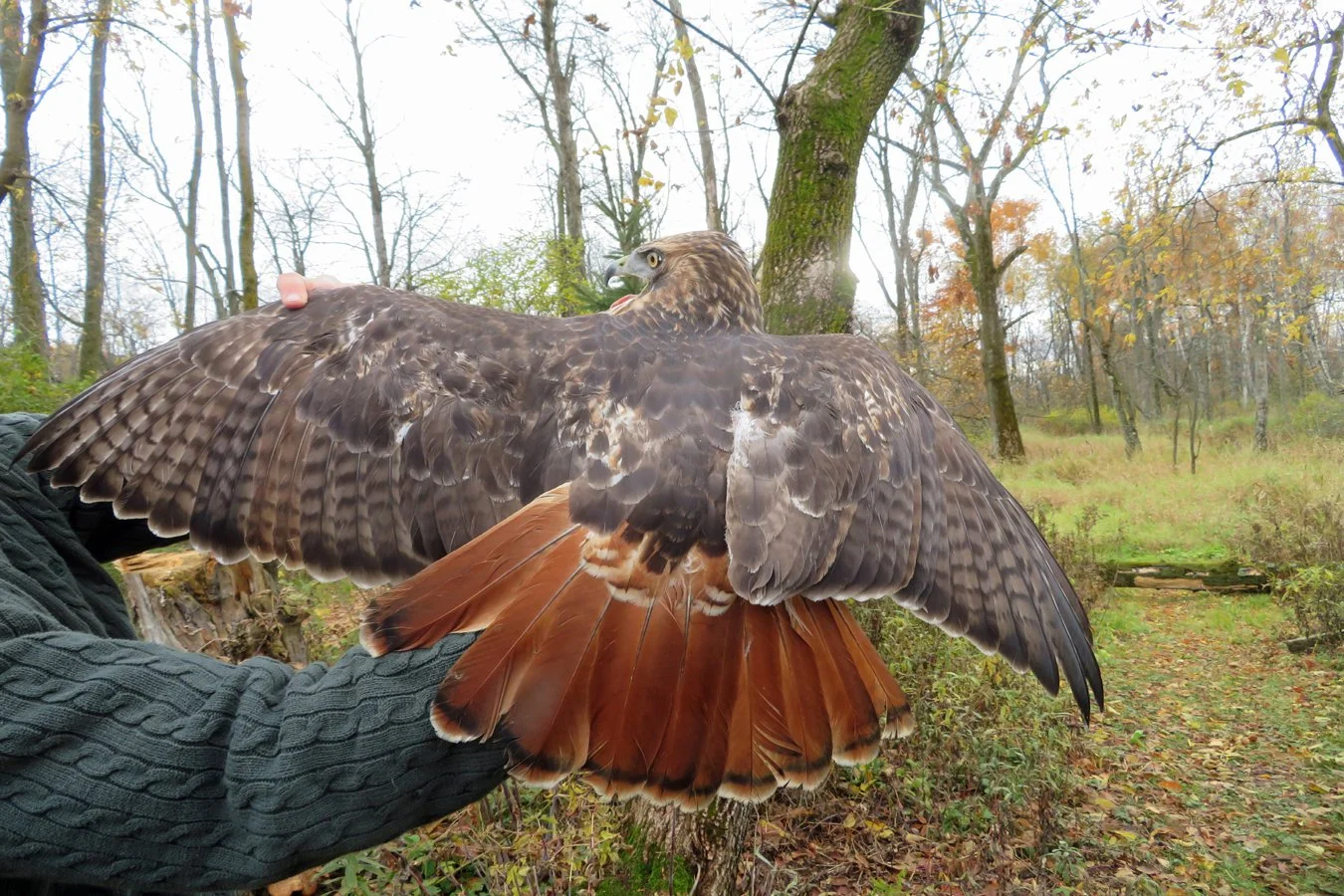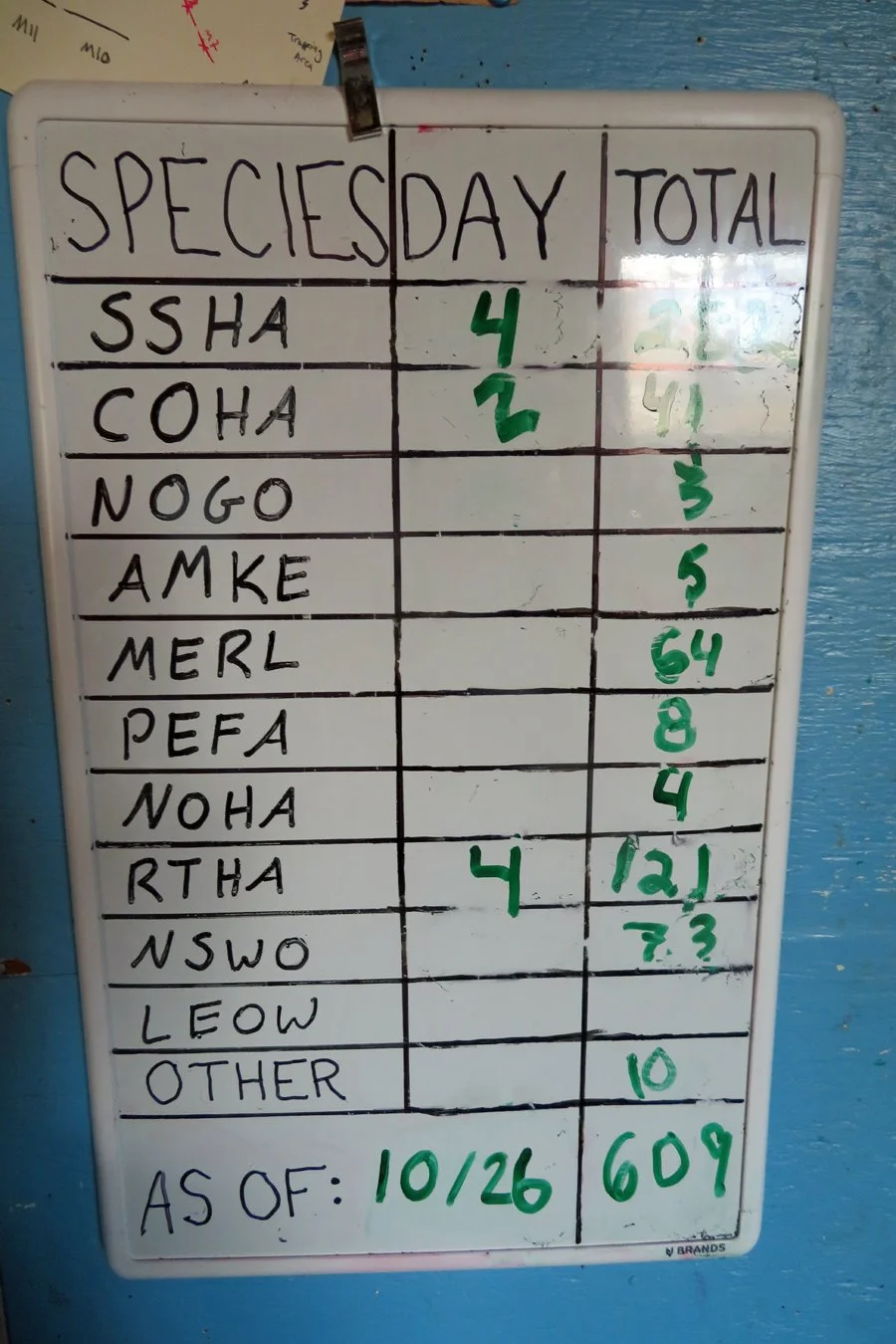On October 26, Mark led a group of special guests and myself on a tour to Wisconsin’s eighth State Natural Area and the site with the longest sustained record for observations and trapping of birds of prey in North America: Cedar Grove Ornithological Research Station (CGORS). CGORS is nestled in a thicket of woods near the shoreline of Lake Michigan, a known hotspot for migrating hawks since 1920. However, their raptor banding success is owed to more than their location, but to the years of dedicated volunteers, staff, and interns that spend dawn til dusk banding hawks, falcons, and eagles from mid-August to mid-November. They also band Saw-Whet owls throughout the night in October.
Curt Caslavka holding a second year Sharp-shinned Hawk with golden eyes. Photo by Mark Martin
When we arrived at 10:00 a.m. we were met by one of CGORS 2022 interns, Phoebe, holding the second Sharp-shinned Hawk of the day, a second year bird with golden eyes. This Sharp-shinned was unique in that it lacked the vibrant orange eyes that are typical of second year Sharp-shinned Hawks, but instead possessed golden-yellow eyes that looked to be a gradient of the pale yellow eyes of juveniles and bright orange of second years. Even later in adulthood, Sharp-shinned eyes will darken to a bright red due to hormonal and dietary changes. Field trip goer, Curt Caslavka was fortunate to release this beautiful and unique bird!
CGORS intern, Noah, with young Cooper’s Hawk. Photo by Robert Chang
Shortly after arriving and releasing the second year Sharp-shinned Hawk, Noah, another 2022 intern at CGORS, brought in a juvenile Cooper’s Hawk that we observed being banded and processed before being released. Processing a bird refers to taking measurements of the individual; at Cedar Grove they measure the birds’ tail, wing flat (length of the flat wing from the elbow joint to the tip of the wing), wing chord (length of the wing from the elbow joint to the wing tip with the natural curvature of the wing), weight, molt if applicable, and food if present. However, an extra processing step is required for Sharp-shinned Hawks and Cooper’s Hawks due to oral Capillariosis caused by a type of nematode that results in oral lesions in Sharp-shinned Hawks; Cooper’s Hawks are also checked for the presence of lesions since they are closely related to Sharp-shinned Hawks.
Second year Red-tailed Hawk. Photo by Mark Martin
During our trip to the station, they caught and banded four Sharp-shinned Hawks, two Cooper’s Hawks, and four Red-tailed Hawks out of the 123 raptors seen at the station and reported to Hawk Count when we left at 3:00 p.m. Among the raptors that were seen, but not captured, were four Merlins, seven Bald Eagles, one Red-shouldered Hawk, thirteen Turkey Vultures, one Northern Harrier, and additional Sharp-shinned, Red-tailed, and Cooper’s Hawks. The final count of raptors observed at CGORS during the 10.3 hours of counting was 130, which included three additional Merlins and the first Rough-legged Hawk of the season.
Cedar Grove banding station. Photo by Emma Raasch
Red-tailed Hawk in can after banding. Appropriately sized cans with air holes are used by bird banders to keep the birds calm and safe while banding. Photo by Robert Chang
CGORS banded birds in 2022. Photo by Mark Martin
This season’s highlights at Cedar Grove include a record number of five Great Horned Owls captured and banded. These owls are likely a local pair of nesting owls with three young. On October 16, CGORS also caught their first Northern Goshawk since 2020, and have since caught two more.
Despite the distance between Cedar Grove and Madison Audubon, we are connected in our passion for birds, conservation, and even individual birds themselves. In 2020, Danny Erickson, Master Bander at CGORS, banded an American Kestrel chick at the home farm of Tom Meyer, former CGORS Master Bander, near Sheboygan Marsh. This same American Kestrel was recaptured in 2021 and 2022 in a nest box in Lafayette county as a part of MAS’s Kestrel Monitoring Program coordinated by Madison Audubon volunteer, Brand Smith. Furthermore, Madison Audubon sponsored a transmitter that was placed on “Madison”, a Red-tailed Hawk a part of the Red-tailed Hawk Project by Danny Erickson at CGORS. Another Red-tailed Hawk, Otto, received a transmitter at CGORS thanks to Goose Pond volunteers, Jim and Suzanne Otto.
Mark Martin (right) with former CGORS Master Bander, Tom Meyer (left). Photo by Emma Raasch
If you’d like to read more about CGORS, check out our past Friday Feathered Features, Cedar Grove Ornithological Research Station, and Cedar Grove Turns 70.
We’d like to thank the folks at Cedar Grove for welcoming us into their busy day banding raptors and for the interesting facts we learned along the way. And of course, thank you to Mark for leading an excellent field trip!
Written by Emma Raasch, Goose Pond Assistant Land Steward












